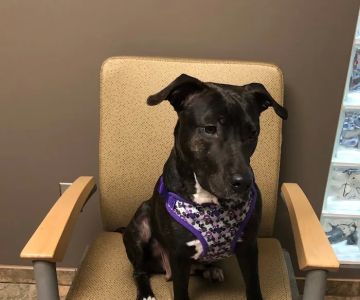How to Effectively Handle Your Pet's Medical Emergencies: A Guide for Pet Owners
1. Understanding the Importance of Quick Action in Pet Emergencies
As a pet owner, one of the most terrifying experiences you can face is dealing with a medical emergency involving your beloved furry friend. I know from personal experience how crucial it is to act quickly in such moments. Time is of the essence when it comes to saving your pet’s life. In this article, I’ll walk you through how to handle pet medical emergencies, offering tips and advice based on my experience and knowledge from working with veterinarians. Whether it's a sudden injury, poisoning, or a life-threatening situation, being prepared and knowing what to do can make all the difference.
2. The First Step: Stay Calm and Assess the Situation
The first thing I learned the hard way is the importance of staying calm. It’s easy to panic when your pet is hurt or sick, but panic doesn’t help. I remember when my dog, Max, accidentally ate something toxic. My heart raced as I saw him acting strangely. But after a few deep breaths, I focused on assessing the situation. That’s what I recommend to every pet owner. Take a moment to observe your pet’s behavior—whether they’re vomiting, limping, or acting lethargic. Understanding what’s happening allows you to make better decisions and communicate clearly with any veterinary staff.
3. Key Signs of Medical Emergencies in Pets
Recognizing signs of medical emergencies in pets can save precious time in an urgent situation. As a pet owner, I’ve learned to look for specific symptoms, which might include:
- Severe bleeding: If your pet is bleeding heavily from any part of their body, it’s essential to stop the bleeding immediately. Apply pressure and contact a vet as soon as possible.
- Difficulty breathing: Rapid or labored breathing is a serious sign of distress in pets. This could indicate a variety of issues, such as choking, heart disease, or respiratory infection.
- Vomiting or diarrhea: A sudden onset of vomiting or diarrhea, especially if accompanied by lethargy or signs of pain, can be a warning of a toxic ingestion or a severe gastrointestinal issue.
- Seizures: If your pet has a seizure, it’s important to keep them safe and ensure they don’t hurt themselves. Time the seizure and seek veterinary help immediately afterward.
- Unresponsiveness: If your pet is unresponsive or difficult to wake up, this is a major red flag. It could be a sign of shock, poisoning, or other severe conditions.
By learning the signs of distress in pets, you can act more swiftly and effectively in emergencies.
4. Common Pet Medical Emergencies and How to Handle Them
Over the years, I've dealt with a variety of pet emergencies. Here are a few of the most common ones, along with advice on how to handle them:
4.1 Choking
If your pet is choking on something, it’s important to act fast. I remember the time when Max got a toy stuck in his throat. I immediately performed the Heimlich maneuver, which can help expel the object from your pet’s airways. To do this, place your hands just below their ribcage and apply pressure. If that doesn’t work, quickly rush them to the nearest emergency vet clinic.

7790 S U.S. Hwy 1, Port St. Lucie, FL 34952, USA
See Details4.2 Poisoning
Poisoning is another critical situation. My cat, Felix, once chewed on some lilies that were toxic to him. The moment I realized what had happened, I contacted the vet for advice. It’s important to know what substances are toxic to your pet and keep such items out of reach. If poisoning occurs, make sure to bring any packaging of the suspected poison to the vet to aid in treatment. Some symptoms of poisoning include drooling, vomiting, and lethargy.
4.3 Heatstroke
Heatstroke is a real concern, especially during hot weather. Pets, like dogs, can easily overheat, and I’ve had to deal with a situation where Max was at risk of heatstroke after a long walk in the sun. If you suspect heatstroke, move your pet to a cooler environment and apply cool (not cold) water to their body. Never leave them in a hot car, as the temperature can rise dangerously fast.
5. How to Perform Basic First Aid on Your Pet
Having basic first aid knowledge can be life-saving during pet medical emergencies. Here are a few first aid tips that have been invaluable to me in my experience:
5.1 CPR for Pets
If your pet stops breathing or has no heartbeat, performing CPR can help revive them until help arrives. To perform CPR, lay your pet on their side, place your hands over their ribcage, and apply gentle pressure. Be sure to only perform this if you are trained, as improper technique could cause harm.
5.2 Bandaging Wounds
If your pet has a cut or wound, it’s important to control bleeding and prevent infection. Gently clean the wound, apply a sterile bandage, and ensure it is not too tight to restrict blood flow. Keep an eye out for swelling or signs of infection, and seek professional care as soon as possible.
6. When to Seek Professional Veterinary Help
While there are many things you can do at home to stabilize your pet, there are situations that require immediate professional care. If your pet’s condition doesn’t improve after basic first aid or if you’re unsure about the severity of the situation, I highly recommend contacting your vet or the nearest emergency clinic right away. In some cases, even seemingly minor symptoms can be signs of a more serious underlying condition.
When in doubt, always err on the side of caution. Your pet relies on you to make the best decisions for their health and well-being.










